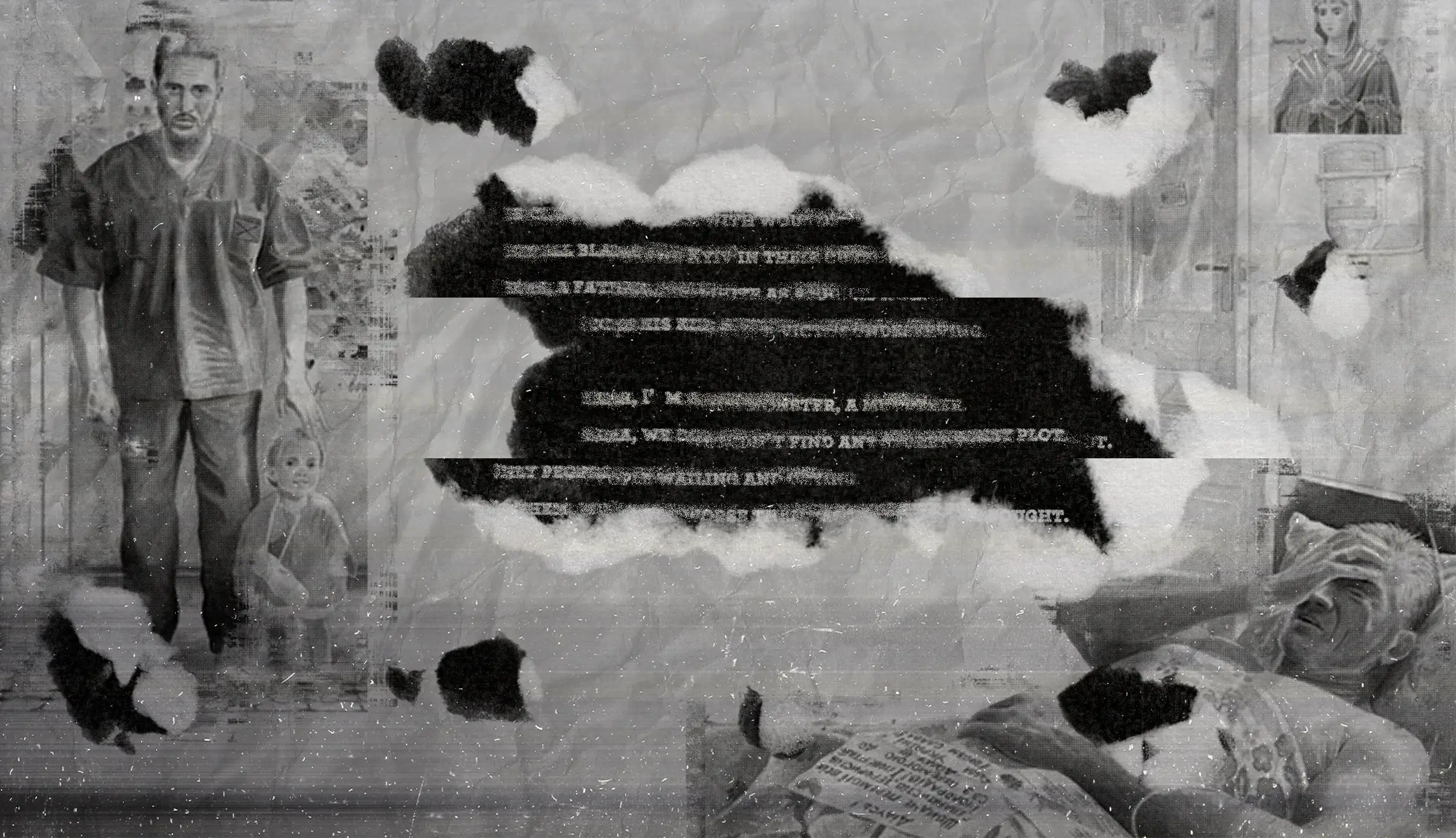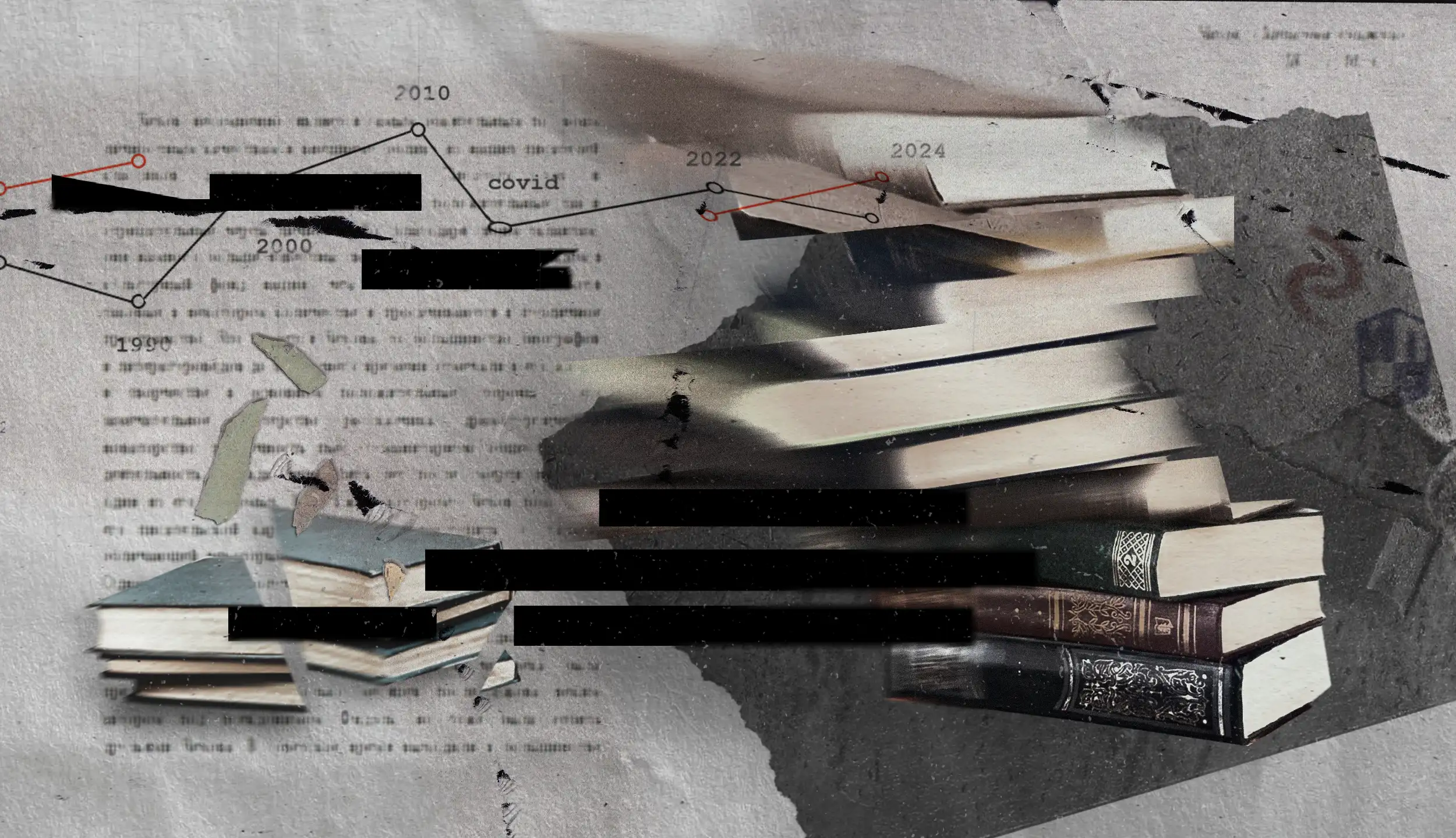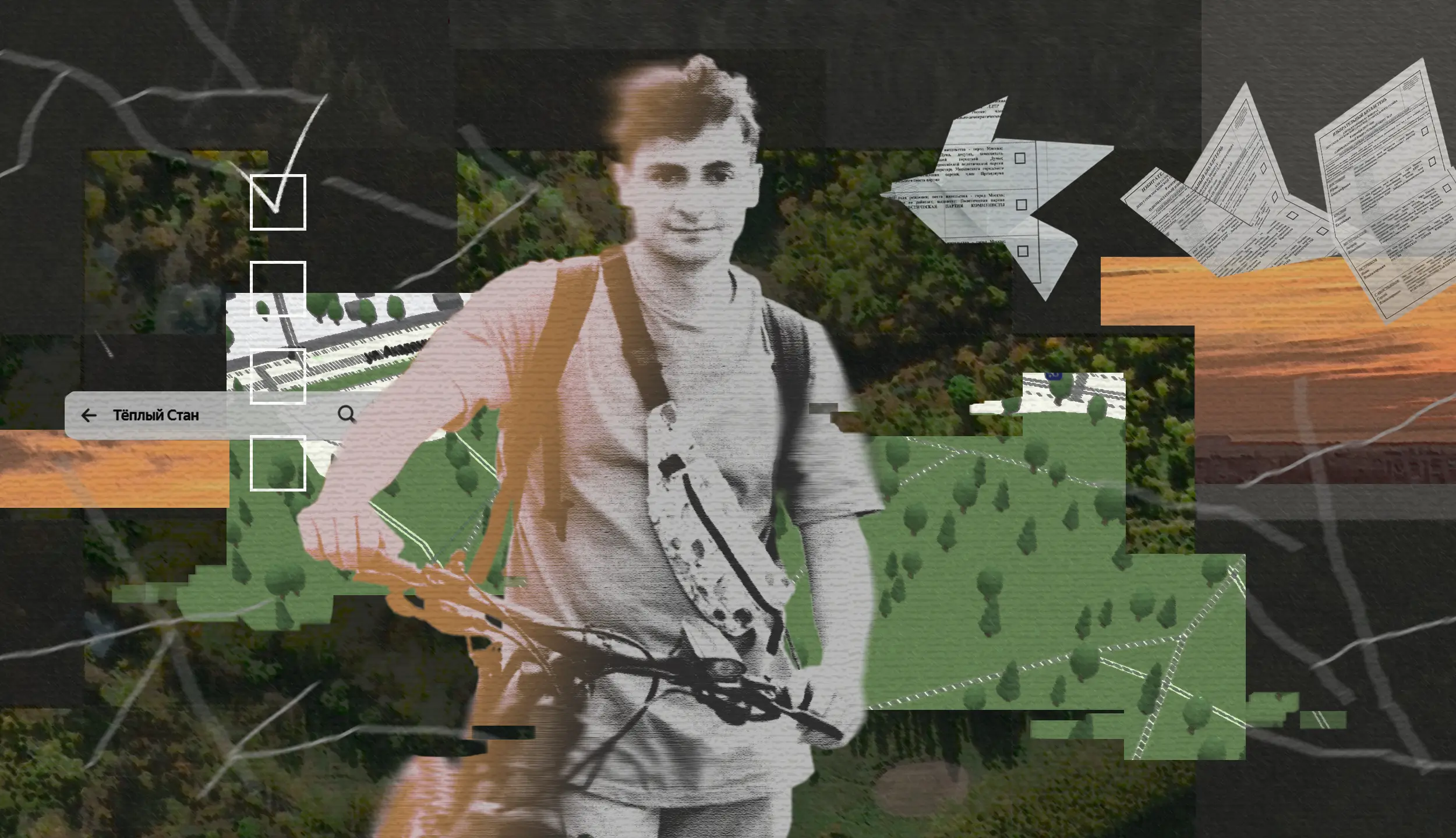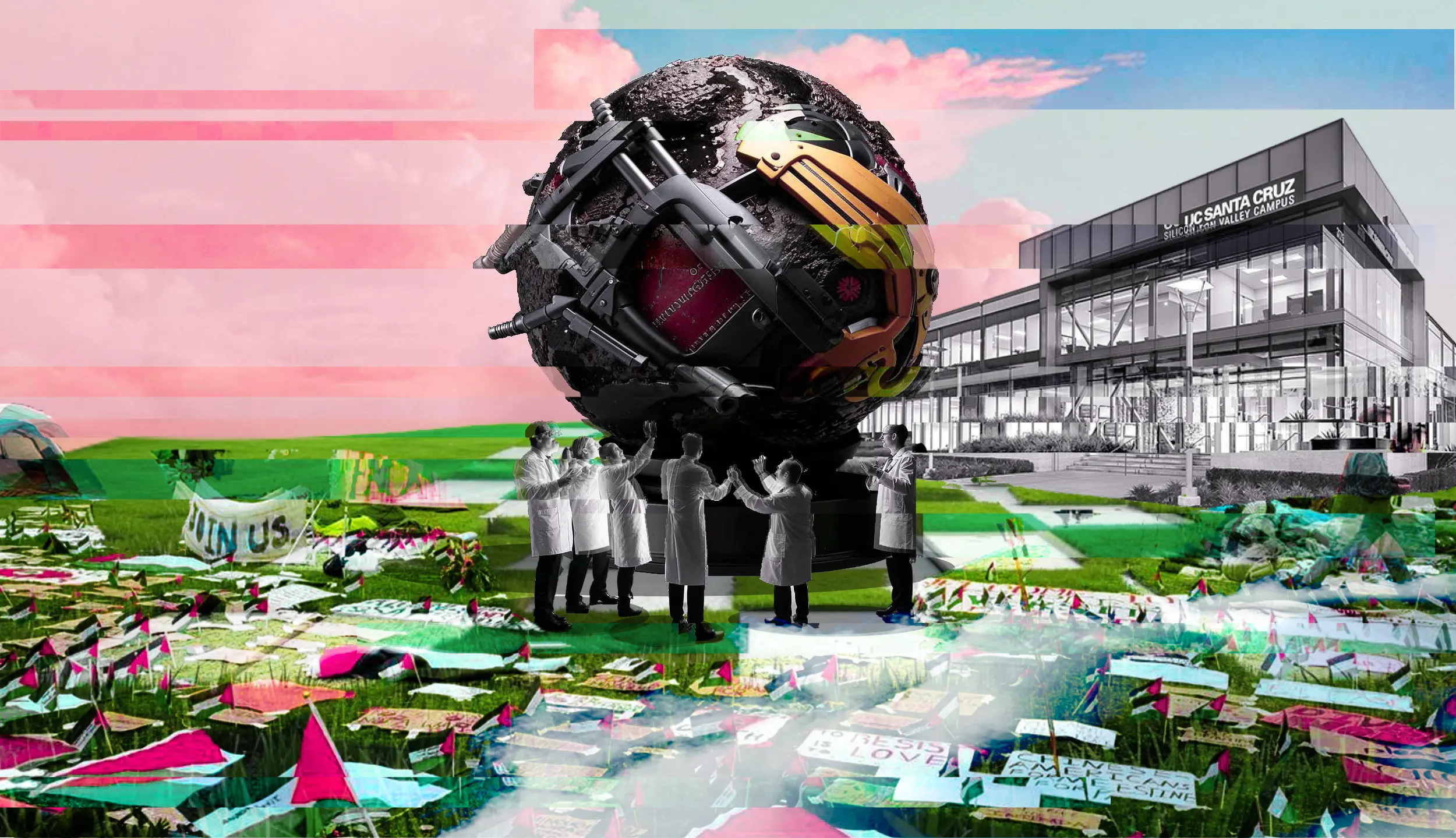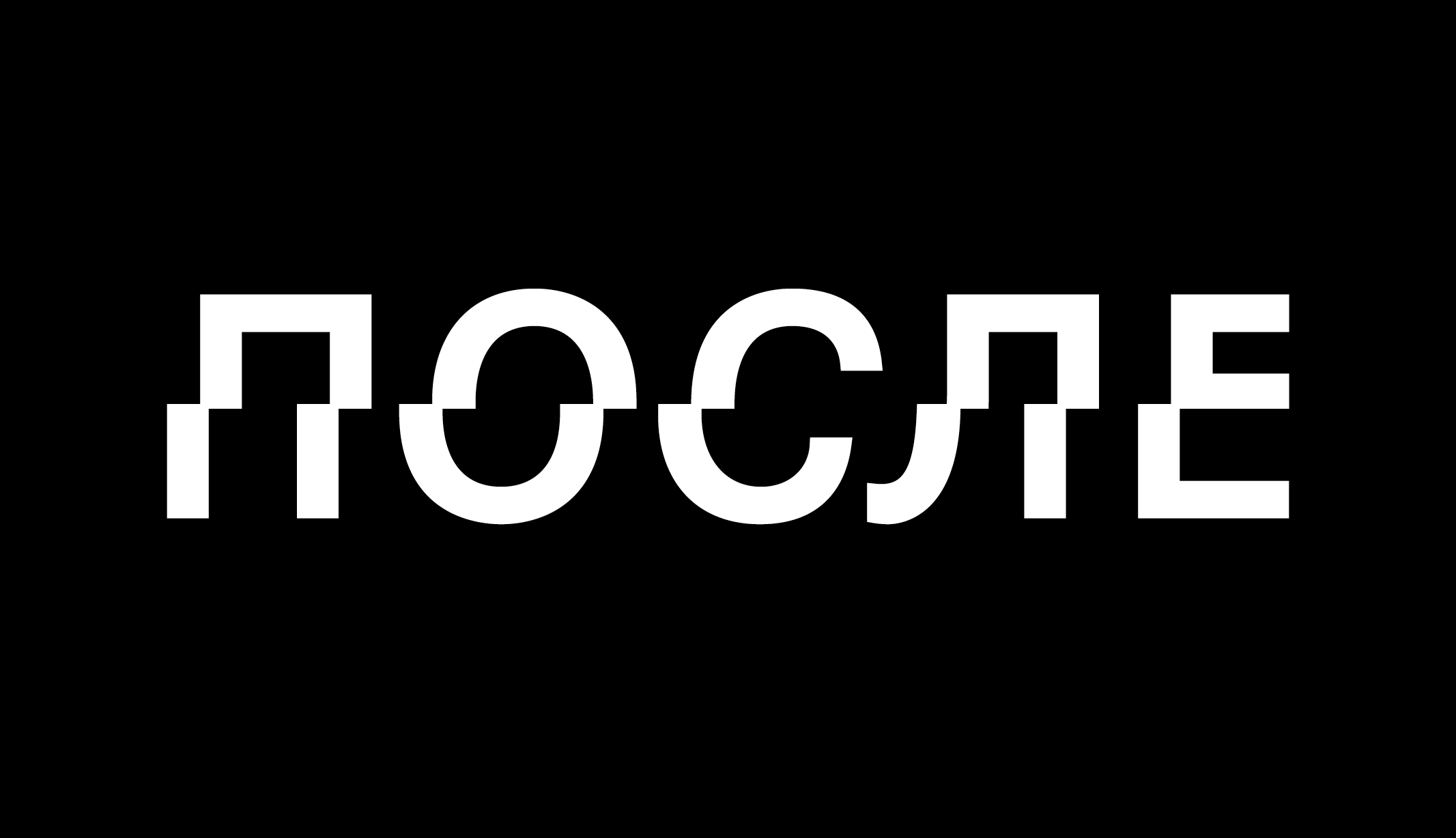In March 2022, a friend forwarded me a poem she got from a relative who supports the war in Ukraine. The relative believed this text would inevitably influence my friend’s anti-war stance. It was written in 2015, shortly after the annexation of Crimea and the outbreak of the conflict in Donbass. The poem quickly became popular while its authorship was debated, with the discussion eventually picked up by the Komsomolskaya Pravda newspaper (the full text of the poem is available via the link). The text’s persona is a captured Ukrainian soldier. He writes a letter to his mother repenting that he fought against Russia in Donbass: “Mama, I’m a prisoner, but don’t you cry, / He sewed me up as good as new, / That good old doctor from Donetsk / Severe and weary through and through.” He shares what he witnessed and describes the aftermath of city fights: “They drove us through the sites, / Where missiles fell, where bombs had hit. / And we could not believe our eyes: / Donbass is gone, we’ve ruined it!” Using this poem as an example, I will highlight some features of the pro-war aesthetic, which are not new in themselves but have revealed themselves with new intensity over the past year and a half.
Most anti-war-minded Russians disgustedly turn away from such texts and the fellow citizens they are popular with. This reaction is triggered by the political stance these poems broadcast as well as their literary qualities. As the friend who forwarded me the poem put it: “It’s a double blow: Putinism and sh*tty poetry.” I did not argue with her then, but now, having given it a lot of thought, I believe we should not dismiss such oeuvres with hasty aesthetic judgments. Instead, I suggest we try to understand these poems’ popularity. What does this poetry represent and what does it stand for on closer examination?
Military Melodrama
Artworks supporting the war often feature a melodramatic component. The poem I’ve referred to uses the melodramatic canon described in Peter Brooks’ The Melodramatic Imagination: Balzac, Henry James, Melodrama, and the Mode of Excess (1995). The classic melodramatic conflict of good and evil emerges here through the juxtaposition of “our people” and “the enemies.” “The enemies” are represented through an enemy soldier, the poem’s persona. His image follows the best traditions of melodrama as a genre; he is a suffering and vulnerable person torn in a moral conflict that is not resolved in his favor. This imagery has its own history and was studied in an adjacent political context in Serguei Oushakine’s article Cruel Romances of War: Victims and Witnessing after Afghanistan. However, unlike the Afghan lyrics analyzed by Oushakine, this poem depicts “the enemy” in this vein, not the in-group. Of course, the constructed image of the Ukrainian soldier is nothing but a narcissistic reflection of “our” soldier, as it embodies the imperialist imagination: “we are a united nation, which means we can depict a Ukrainian soldier in the same manner as a Russian one.”
The image of “our people” follows the melodramatic style perfectly well too. As Brooks shows, one of the genre’s tropes is the victim saving the offender. The function of the victim is to serve an example of virtue as opposed to obvious villainy. In melodrama, a victim does not respond to aggression with more aggression, but rather stays passive, thereby proving their innocence. The poem is full of such victims: a Donetsk doctor treating a soldier; an enemy soldier who does not shoot at the persona (Mama, we were sent to slaughter, / Our commanders did not care at all. / I heard an enemy combatant yell out: / ‘Stop, on the ground, you maggot, fall!’), and civilians (The clinics teem with wounded men. / They all blame Kyiv in their cursing. / There, a father, white as a sheet / Rocks his kid, a victim undeserving).
A very important stanza emphasizes the polarization of “ours” and “the others”: “Mama, I’m a monster, a murderer. / Mama, we didn’t find any secret terrorist plot. / Only people wailing and crying. / To them, we’re worse than fascists that we fought.” The “terrorist” here refers to the enemy “militias”, or rather to how they were represented by the penitent soldier’s side. Rejecting this perspective, the soldier renounces the narrative that he previously accepted as the truth and that pushed him to take part in the war. On the other hand, he calls his own side “fascists” now. This word in this context undoubtedly refers to the Second World War, which historicizes the soldier’s idea of the events through a well-known analogy. Thus, both words, despite the difference in whom they refer to, denote the enemy, an unconditional and undeniable evil that needs to be fought. The words “terrorists” and “fascists” function as performatives, not as analytical categories. Their function is to conjure up in the reader’s imagination a certain political, ethical, emotional judgement which is historicized too, i.e. refers to certain historical events. These words are part of melodramatic economy too: they label the evil, the out-group, and are used for the enemy exclusively. They label and contrast the parties in a moral conflict, which is exactly what happens in melodrama. Obviously, it is true not only for this poem, but also for the war discourse in principle, the official one included.
The poem’s melodramatic nature made it extremely popular online and spurred a frenzy of creativity with multiple videos where it is read aloud or even sung. One such video was produced by the Russian actor Mikhail Porechenkov and published on March 12, 2022. The actor reads the poem against the background of the “sacred corner,” with icons behind him. At the end of the video, he addresses the Russian army saying “Work, brothers.” Another version is performed by Yulia Slavyanskaya, a “spiritual and patriotic singer” (as she describes herself). The religious context of this adaptation chimes with the icons from Porechenkov’s video, and, more broadly, with the Russian Orthodox Church justifying the war in Ukraine as a “holy war”. The singer enhances the penitent tone of the poem by adding “Lord, have mercy! Lord, forgive me!” as a chorus. Another adaptation of the poem is made in the best traditions of shanson, the Russian criminal song genre. It is difficult to ignore the choice of this musical genre; it was not ignored by a YouTube user who wrote the following comment under the video: “such songs shouldn’t be sung as the criminal’s songs, <…> I did not like it. The song is not of a convict, but of a soldier from the war.” However, well-documented cases of convicts being recruited to participate in hostilities on the Russian side show that the distance between a prisoner and a soldier may not be as far as the commentator perceives.
Full Mobilization of Ready-Made Forms
This aesthetic normally uses ready-made forms that are part of the popular culture, including those that have become entrenched in Russia to represent the commemoration of wars and are actively disseminated by state propaganda. The form and subject matter of the poem in question echo well-known examples of Soviet military lyric poetry, for example, Konstantin Simonov’s A Letter from Argentina (1954), written in iambic tetrameter too: “A letter came from Argentina / To sorrowful mother from her son.” The poem’s adaptations as a song are also embedded in a certain tradition: for example, soldiers’ shanson, which Serguei Oushakine mentions in his article.
The poem’s aesthetic is conservative, in a sense that it does not look for new ways to address the experience of war and is not open to finding new meanings in it. Instead, it appeals to the existing and widely available templates that revive the connotations propaganda needs with proven efficiency. The appeal of such forms can be understood as natural if we realize that the condition of war is potentially experienced like a crisis. The resurrection of the familiar, as opposed to eliciting something new, is a response to political, economic, and moral uncertainty. The reproduction of clichés and stereotypes stems from the desire for emotional comfort. Such comfort is readily offered by Russian propaganda art. Theodor Adorno explains the “topographic function” of clichés and stereotypes in his Authoritarian Personality (1950). Adorno suggests that the stereotypical perception of a complex and multifaceted phenomenon eases the work of its understanding. In other words, stereotypes and clichés simplify the phenomenon, make it two-dimensional, and present it through a familiar pattern. Wrapped in a reduced and familiar form, the phenomenon is made available for guided and faster comprehension. Adorno also notes that stereotyping contributes to social navigation around the phenomenon. That is, if another person or a group of people share the stereotype, communication becomes conflict-free, pleasant, and emotionally convenient. Propaganda narratives, including artistically designed ones, rely on this mechanism.
Striving for aesthetic familiarity and comfort is a natural reaction when one feels uncomfortable in the face of unfolding events. It should be emphasized that Russian propaganda has efficiently manipulated this emotion for many years, in all available ways and with all possible means of communication, including art. One has only to think about annual celebrations in honor of the Great Patriotic War that involve reproducing well-known military songs and screening Soviet war films, as well as creating new but similar oeuvres, for example, Black Hunters (2008) and Black Hunters 2 (2010) and a remake of the 1972 film The Dawns Here Are Quiet (2015). However much we would like to believe that the fear of war should generate anti-war sentiment, in fact, it may also generate the opposite, as exemplified by the 2015 poem and these films. This is a pro-war sentiment which is not aware of itself as such. It disguises itself rhetorically as a peacemaking sentiment but justifies military aggression, calling it “self-defense.” Pro-war aesthetic is presented as anti-war, since its alleged purpose is to show the horrors of war, condemn them and pinpoint the enemy.
It should be noted that such manipulation is hardly an invention of Russian propaganda. Jonna Eagle describes a very similar use of the melodramatic genre in her book Imperial Affects: Sensational Melodrama and the Attractions of American Cinema (2017), explaining how it was used in the American political context after the September 11 attacks: “As exemplified by Bush’s Patriot Day proclamations, political rhetoric after 9/11 turned swiftly and insistently to the spectacle of injury and suffering, both as the foundation of national innocence and goodness and an irrefutable argument for violence as a righteous and necessary rejoinder to such suffering. Sympathy and aggression operate as twinned affects here: the identification with suffering serves simultaneously as an alignment with and implicit endorsement of state-sponsored violence.” In pro-war aesthetic, melodramatic affect enhanced by the familiarity of the artistic form is used to mobilize the emotional context and serves as an efficient tool for justifying military aggression, providing it with an artistic expression. This is the role that such forms play in the dissemination, harmonization, and consistent support of collective political imagination.
Semantic Emptiness
Despite the apparent richness of meanings, upon closer examination pro-war aesthetic reveals semantic emptiness. The story of the text I quote here is a striking case in point. In March 2022, another version of it appeared online. Instead of the original “that good old doctor from Donetsk”, “Letter of a Ukrainian soldier” and “The Prisoner of Donbass,” the new version’s title became “Letter of a Russian soldier” and the doctor’s place of origin changed into Kherson. The alterations affected only six lines of the poem, with the persona’s nationality transformed: the penitent Ukrainian soldier turned into a Russian.
The poem was inverted to condemn Russian military aggression. Today, the new version is gaining popularity, spreading on the Internet just like the original did: via websites, blogs and social media, videos of it being read aloud and sung, even in Latvian. This version of the text has been translated into Ukrainian. The change of the lyrical persona’s nationality from Ukrainian into Russian is very indicative. This act of postmodernist-like inversion exposes the original text’s semantic emptiness, once again proving that its content is a phantasm. It demonstrates how easily this aesthetic can be filled with not just any other, but the opposite meaning, completely changing its intentionality.
This point has to be addressed in more detail. First, I want to be clear that I do not put on a par the Russian and the Ukrainian sides and in no way claim that this aesthetic functions similarly in the Ukrainian context. It is in the Russian context that it gets embedded in the tradition of commemorative war practices as well as the propaganda narratives that go with it. The inversion exposes the semantic emptiness of Russian propaganda narratives and effectively directs their power against themselves, recontextualizing this semantically empty and surprisingly powerful aesthetic. The inversion is a direct response to the original expression of Russian military aggression, now transferred into the context of the defensive war waged by Ukraine. Thus, the melodramatic aesthetic of the original text and the practices of its dissemination merge with an opposite political message. It is extremely ironic that the Russian side which unleashed a criminal war is struck by its own aesthetic weapon. After all, the original logic of imperialist narcissism, which underpins the image of the Ukrainian soldier, in the inverted version starts to refer to the Russian soldier who was its initial prototype. It should also be noted that the poem was written in Russian, the language that is used as a weapon in this war. It is exactly through the inversion that the text acquires its most complete meaning, much better corresponding with the reality than the original one.
This text’s poetic style and its history clearly show how the pro-war aesthetic, with the help of well-known forms, manipulates the perceiver’s emotions, contributing to the artistic justification of the war. At the same time, as I tried to demonstrate, aesthetic here goes beyond playing an important role in designing the political context but instead becomes a special form of politicization that is successfully instrumentalized by Russian propaganda today.
This publication was supported by Сhto delat e.V.

